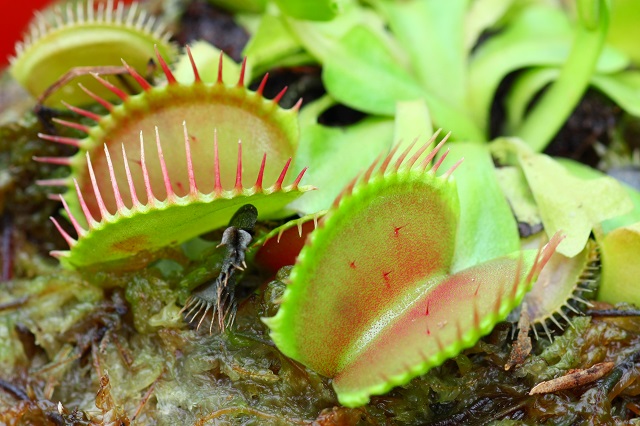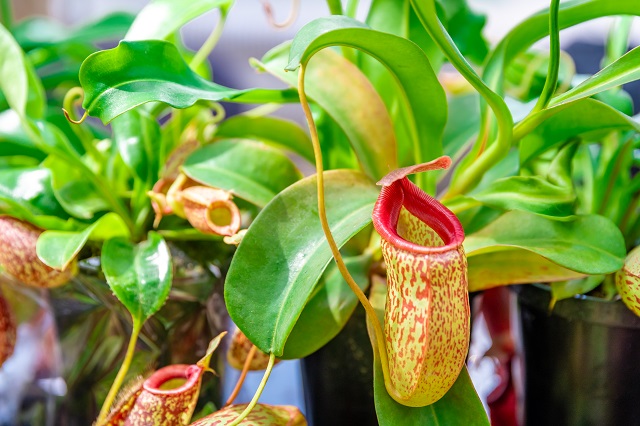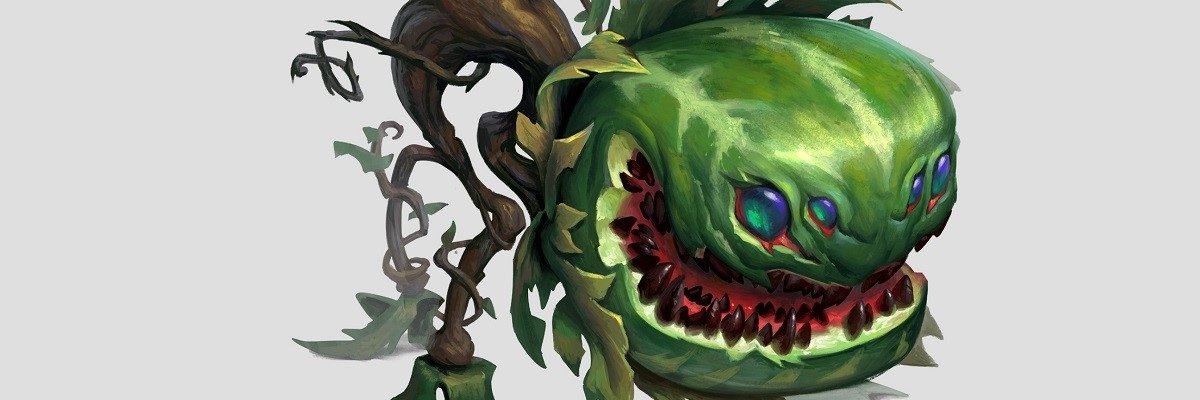Carnivorous plants evolved to absorb the nutrients needed to grow from capturing and killing prey (insects). They digest their prey, typically insects or arthropods, to access the nutrients for growth. There are over 583 species of carnivorous plants over more than 12 genera.
Carnivorous plants are a fascinating field of plant evolution with various remarkable adaptations that allow them to catch prey. From bear traps to corkscrew mazes and tentacles, these unique carnivorous plants evolved over 70 million years ago by some estimates. However, you might wonder what exactly are carnivorous plants?
Carnivorous plants seem a weird mix between plant and predator and make a wonderful example of genetic evolution’s diverse forms. If you are thinking of owning one of these exotic creatures, here are some facts about what makes them unique.
What Plants are Considered Carnivorous?
Plants that are considered carnivorous capture prey in the form of insects and arthropods. The plants rely on nutrients absorbed from dead prey for growth or reproduction. They use multiple devices to attract and devour their prey through pitfall, sticky, and lobster-pot traps.
Darwin made carnivorous plants part of his study on evolution as they form a fascinating study in plant adaptation. Scientific studies have recognized 583 species of carnivorous plants in 20 genera, 12 families, and five orders of flowering plants. Based on DNA research, carnivorous plants represent at least nine independent evolutionary adaptations to their specific habitats.
Thus, a wide variety of independently evolved plant species survive by digesting the captured and killed prey within their adjacent surfaces. Some species don’t have significant attractants and rely on trapping prey in passive pitfalls like Australian and American pitcher plants.
Other carnivorous plants trap their prey with sticky tentacles such as sundews and snap traps like Venus flytraps. Some carnivorous plants lack the enzymes to digest their prey and form symbiotic relationships with specific microbes or insect larvae to break down their prey.

How Did Plants Evolve to be Carnivorous?
Plants evolved to be carnivorous to supplement nutrients in poor soil conditions. Research suggests that the carnivorous plants favored poor soil conditions to take advantage of the accelerated photosynthesis to create new leaf tissue while reducing energy to their root systems.
Many species of carnivorous plants favor open, infertile, and most sites and areas of wet, sandy, and fire-swept nature, such as the Roridula and sundew. In fact, the earliest preserved carnivorous plant fossil is a relative of the Roridula.
A scientific study revealed a rare incidence of preserved evidence of carnivorous fossils preserved in amber. Until this find, there was a shortage of evidence of the fossilized remains of the carnivorous plant family alive today.
The two angiosperm leaves held in the Baltic amber share similar morphologies with a surviving species of Carnivorous plant native to the Cape flora of South Africa called the Roridula or Ericales.
Like the modern Ericales, the fossil showed unicellular hairs and tentacles, suggesting that the carnivorous plant species had a wide distribution in the Eocene age. This carnivorous plant’s ancestry spanned between 56 to 33.9 million years ago.
Other studies suggest that carnivorous plants generally evolved between 8 and 72 million years ago.
What Habitat Do Carnivorous Plants Favor?
Carnivorous plants favor warm, hot, and humid or wet habitats in subtropical to tropical regions. They tend to grow in wet, open, and nutrient-poor areas and are more intolerant of dry soils than non-carnivorous plants. However, different species have diverse sun and soil moisture requirements.
Generally speaking, carnivorous plants do not compete with other plants well because they invest heavily in their capturing structures, which offer no advantage in nutrient-rich soils. The ability to capture and digest prey only benefits when nutrients are scarce and light is abundant.
While nutrient-poor soil and moisture are typical habitats for carnivorous plants, the ideal conditions vary between carnivorous species. For example, the Venus flytrap thrives in waterlogged soil with almost no calcium and nitrogen in the soil.
However, the Portuguese sundew favors the edges of deserts as its habitat, and the Pinguicula valis neriifolia favors limestone cliffs in areas of Spain.
The Five Main Types Of Carnivorous Plants
Although carnivorous plants evolved independently over a variety of genera, their prey capture mechanisms fall into similar categories. One may divide These general characteristics into the following four types.
Pitfall Traps
Pitfall traps have a simple trapping mechanism with a pitcher-like receptacle of a modified leaf containing digestive enzymes that absorb prey that falls within the receptacle.
An internal chamber that characterizes pitfall traps passively traps their prey with nectar and bright patterning. Otherwise known as pitcher plants, they typically use a coating of waxy flakes that are too slippery for insects to escape.
Once the prey falls into the pitcher, the plant uses digestive enzymes to digest the prey into absorbable nutrients. Pitcher plants often employ a phytotelma water body to create a habitat for plants and animal life.
Examples of the pitfall include :
| Sun pitchers (Heliamphora) | Tropical pitcher plants (Nepenthes] |
| Bromeliads such as the Brocchinia reducta | Trumpet pitcher (Sarracenia.) |
| The Cobra lily (Darlingtonia) |

Flypaper Type plants
These carnivorous plants employ sticky tentacles of mucilage to trap their prey. These flypaper plants are considered active carnivorous plants, and their tentacles respond to prey and can bend or roll around their meal up to 180 degrees in under a minute in some species.
Once the plant attracts its prey to its sticky lair, it absorbs the nutrients from the prey by employing special glands that secrete digestive enzymes from the leaf itself. Examples of this type of plant include:
| Examples of this type of plant include: |
|---|
| Rainbow plants (Byblis) |
| Butterworts (Pinguicula.) |
| Sundews (Drosera) |
Snap Trap Type Plants
The iconic venus flytrap and the waterwheel plant are the only surviving species that employ the snap trap mechanism. Studies suggest that flytraps evolved from the more simple flypaper type carnivorous plant.
The snap trap adaptation involved two hinged and toothed lobes that react to touch and close prey, much like a bear trap. Once trapped in the lobes, the plant secretes digestive enzymes to absorb nutrients from the prey.
| The two plants that are snap traps are: |
|---|
| Waterwheel Plant (Aldrovanda) |
| Venus flytrap (Dionaea muscipula) |
Bladder Trap Plants
Bladder trap plants or bladderworts ( Utricularia) are carnivorous plants’ aquatic, terrestrial, and epiphytic species. The aquatic bladder traps use air-filled sacks to create a partial vacuum. The bladder uses a hinged door with trigger hairs that release the vacuum when prey is nearby and suck in their prey for digestion.
The larger bladderworts can capture prey as large as fish fry and tadpoles, while the smaller plants consume protozoa and rotifers.
| The Utricularia family contains ver 220 species, including: |
|---|
| Common bladderwort ( U.Vulgaris ) |
| Small bladderwort (Utricularia lateriflora, |
| Sun bladderwort (Utricularia chrysantha) |
Lobster Pot Traps
Lobster pot plant traps or Genlisea aurea are similar to the passive pitfall traps and use a chamber with a hidden or obstructed exit to trap and digest their prey. In a series of leaf modifications, somewhat like a maze in the shape of an inverted Y, the lobster pot trap forces prey toward the plant’s stomach for digestion.
Typically the insect is drawn into the plant by nectar, and the prey becomes confused by the glassy windows or areolas that let light into the plant. Otherwise known as the corkscrew plant, the plant creates a corkscrew tunnel that leads into the trap’s inside.
| There are 29 species in this genus, including the variations: |
|---|
| G. aurea var. Aurea |
| G. aurea var. minor. |

